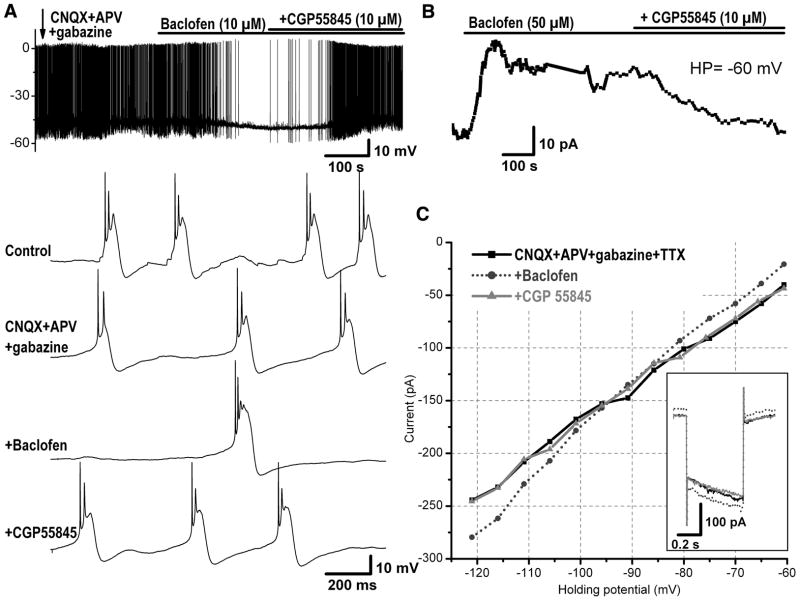FIG. 3.
Direct inhibitory postsynaptic effects of baclofen on ET cells. A: current-clamp recording from an ET cell showing the inhibitory effect of baclofen in the presence of the blockers of fast synaptic transmission (CNQX, 10 μM; APV, 50 μM; and gabazine, 10 μM). Bottom 4 traces: bursting activity at extended timescale under different pharmacological conditions as indicated in the first trace. The fast synaptic blockers eliminated the synaptic potentials that were mostly obvious between bursts in control condition. Baclofen slightly hyperpolarized the membrane potential and significantly decreased and eliminated the bursting frequency. This effect was reversed by addition of the GABAB-R blocker CGP55845. B: another ET cell was recorded in voltage clamp at holding potential (HP) = −60 mV in the presence of tetrodotoxin (TTX, 1 μM) and blockers of fast synaptic transmission (CNQX, 10 μM; APV, 50 μM; gabazine, 10 μM). Baclofen induced an outward current that was reversed by the GABAB-R receptor antagonist CGP55845. C: plot of the current–voltage relationship in the same ET cell as in B under different pharmacological conditions. Baclofen produced an outward current at membrane potentials above −90 mV and an inward current at membrane potentials below −90 mV, which is near the reversal potential of potassium channels. Inset: current response to a 50-mV hyperpolarizing voltage step from −60 to −110 mV (duration 0.5 s) under different pharmacological conditions. During baclofen application, a larger current (dotted trace) was produced in response to the same voltage step, indicating an increase in conductance (i.e., decrease in resistance) of the cell in response to GABAB-R activation.

